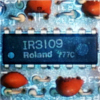Novation Bass Station II by ivan_b

I love synthesizers but in the past years I've come across a few machines that simply did not deliver in sound quality. A good example is the Waldorf Rocket, which is immediately a lot of fun and sounds good until you actually try to mix it.
The Bass Station 2 is also a lot of fun. In fact it has so much hands-on control that I found myself immediately not knowing what to touch first. The layout is logical and it's easy to find the function you are looking for. Novation found a good balance between putting all the immediately useful functions as hands-on control while having the less important ones on a shift+key basis. The fun is so immediate!
The sound of the Bass Station 2 reminds me a bit of my Little Phatty. It's almost as deep and almost as rich as the latter. While the sound of the Bass Station 2 is more controlled that of the LP it can get as crazy. The arp keeps a certain BPM (unlike the LP) and the digital functions you get really make you feel like playing a digital synth, only with analog, superb sound. That's pretty good for a synth that costs less than half the price of the Moog LP.
Build quality is OK. The machine has a plastic shell but the knobs feel really sturdy and there is a plus point for making the filter pot huge!
I will not go into the specifications here. You can read all the technical stuff on the Novation website. What's important for me is that:
- The synth sounds great. Really, it's a joy to listen to. Sonically balanced and beautiful.
- The keyboard feels and play great.
- There is aftertouch.
- There is a programmable arp and a step sequencer.
- Direct input so you can run stuff through the awesome filter.
- Awesome filter.
- Sub oscillator.
- Two LFOs.
- Distorsion.
To me this is the first synth I've come across in recent years that can challenge the LP for BASS! I think it's a must have.
Side note:
I was considering the Microbrute and/or the Minibrute but the lack of the ability to save patches just make them utterly useless in any live situation.











